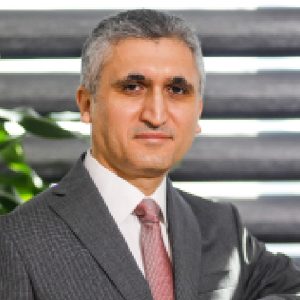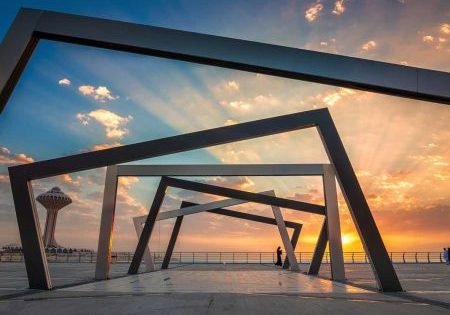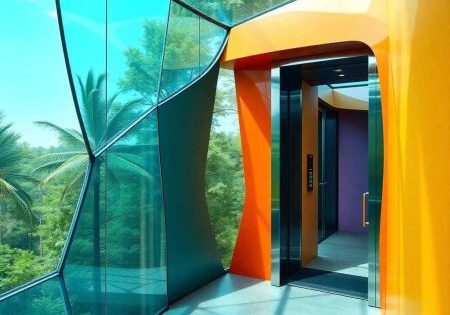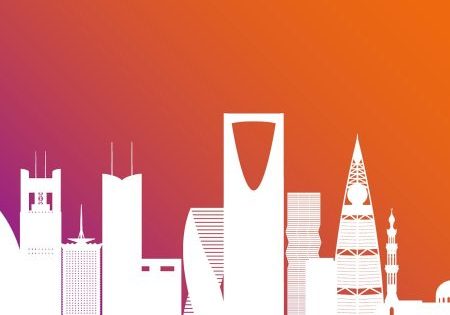Elevating the Future
Sep 1, 2025
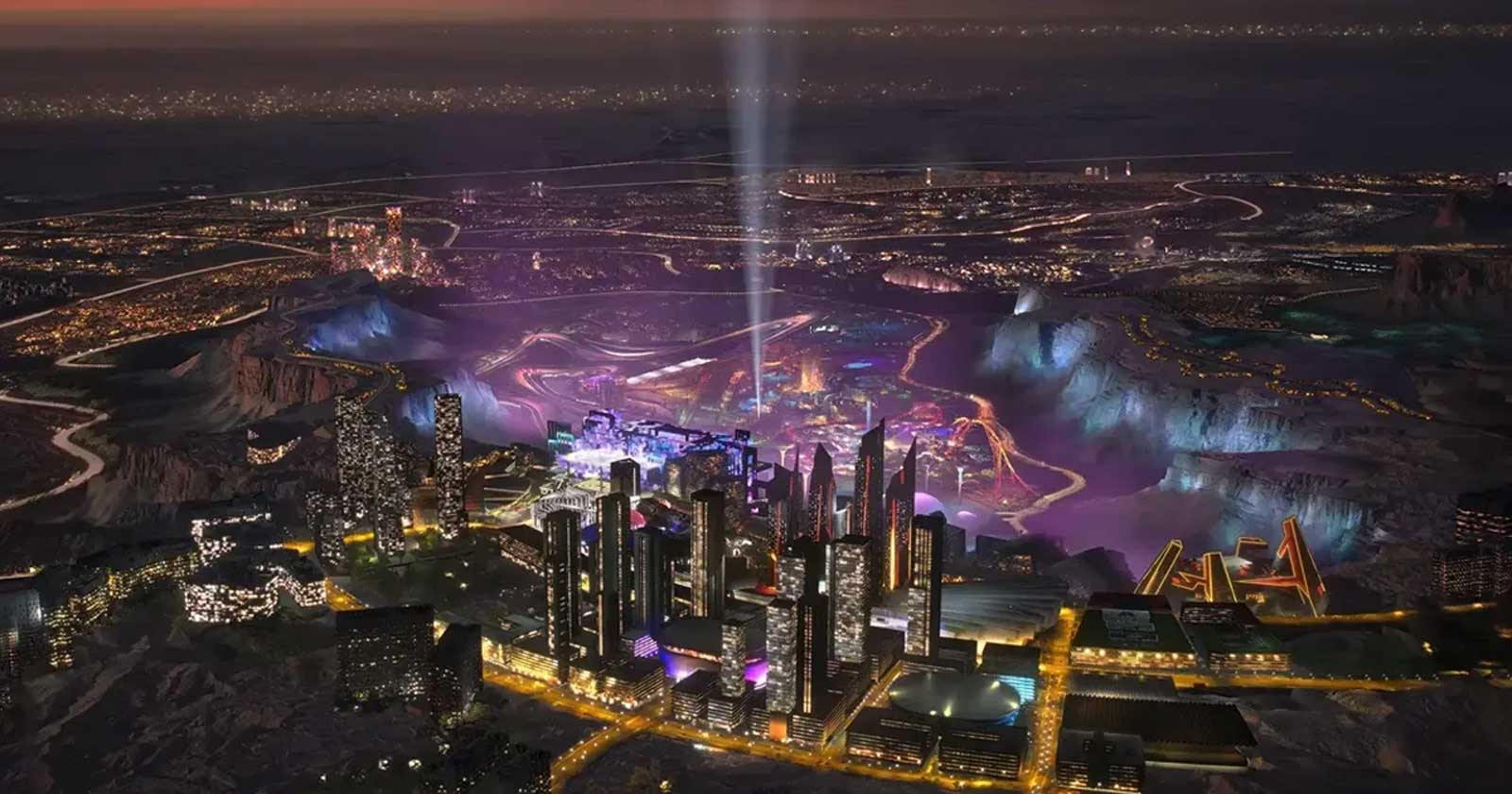
Saudi Arabia’s E&E market in the Vision 2030 era
Introduction: Building Upward in a New Urban Era
Saudi Arabia’s Vision 2030 is reshaping not just the country’s skyline but also the way people move within it. From NEOM and The Line to Qiddiya, The Red Sea Project and Masar Destination, giga-projects are transforming deserts into futuristic urban centers, resorts and cultural destinations.
These developments are vast, dense and technologically advanced, demanding vertical-transportation (VT) systems that are faster, smarter and more energy efficient than ever before. In this context, the elevator and escalator (E&E) industry is no longer a supporting player. It is a central pillar of urban functionality.
Market Size and Growth Outlook
The Saudi E&E market is expanding rapidly. The following statistics illustrate there will be growth of:
- US$1.333 billion in 2024 to US$1.862 billion by 2030, a 5.7% compound annual growth rate (CAGR)[1]
- US$1.5 billion in 2024 to US$2.2 billion by 2033, a 4.1% CAGR[2]
- US$1.1 billion in 2022 to US$1.84 billion by 2030, a 6.65% CAGR[3]
All projections indicate sustained growth driven by megaproject construction, urbanization, tourism expansion and modernization of existing infrastructure.
Key Demand Drivers
Giga-Projects as Vertical Cities
NEOM, The Line and Qiddiya are examples of developments designed with vertical living, working and leisure spaces in mind. These are developments where E&E are integral to daily life. High-rise residential towers, multi-level entertainment venues and transit hubs all require seamless VT to function effectively.
Tourism and Hospitality Growth
Saudi Arabia welcomed approximately 30 million tourists in 2024, with a target of 100 million by 2030. The boom in hotels, resorts and cultural destinations increases demand for high-capacity, high-reliability VT systems.
Technological Advancement
AI-enabled dispatch systems, Internet of Things (IoT)-based predictive maintenance, touchless control interfaces and energy-regenerative drives are rapidly becoming standard in new E&E installations.
Technology Trends Defining the Market
These include:
- AI and IoT Integration: Real-time monitoring and predictive maintenance reduce downtime.
- Energy Efficiency: Regenerative drive technology can cut energy usage by up to 50%.
- Smart Dispatch: Passenger grouping algorithms improve traffic flow in high-density areas.
- Contactless Controls: Smartphone apps, voice commands and gesture recognition enhance hygiene and convenience.
These innovations align directly with Vision 2030’s sustainability and smart city objectives.
Challenges to Address
Saudi Arabia must successfully address several challenges to achieve and maintain VT growth momentum. These include:
- Workforce Shortage: By 2030, a projected deficit of more than 660,000 skilled construction workers could slow VT installation and servicing capacity.
- Regulatory Compliance: Strict Saudi standards, such as those of the Saudi Standards, Metrology and Quality Organization (SAS), demand early integration of compliance in VT system design and procurement.
- Supply Chain Complexity: Coordinating manufacturing, delivery and installation for VT projects of this scale requires precise planning and strong local partnerships.
Competitive Landscape
Global OEMs KONE, Otis, TK Elevator, Schindler, Mitsubishi Electric, Hitachi, Hyundai and Fujitec have strong presences in Saudi Arabia. These companies compete on smart technology integration, sustainability credentials, custom engineering for giga-project needs and service network reliability.
This competitive environment creates opportunities for specialist E&E companies to differentiate themselves through innovation, localization and service quality.
Strategic Opportunities for E&E Companies
The Vision 2030 construction boom presents E&E companies with unprecedented potential for growth and market leadership. For manufacturers, installation contractors and service providers, the key lies in aligning products, solutions and services with the specific demands of giga-projects and the Kingdom’s evolving urban infrastructure.
Tailored Solutions for Megaprojects
E&E market players would be wise to develop systems specifically designed for the extreme requirements of giga-project environments — high-capacity, high-speed units capable of managing intense passenger traffic while meeting architectural and design specifications unique to these developments.
Technology-Driven Differentiation
Companies should invest in R&D for AI-enabled dispatching, IoT predictive maintenance and energy-regenerative drives. Offering integrated smart mobility solutions will position a company as a technology partner, not just a hardware supplier.
Sustainability as a Competitive Edge
Integrating eco-efficient technologies to help developers achieve LEED®, WELL and other sustainability certifications will enhance a company’s reputation and add a competitive edge. Highlighting reduced lifecycle costs, energy savings and environmental benefits in project proposals is a plus.
Localization and Adaptability
Adapting products to local climate conditions, cultural expectations and Saudi regulatory requirements (including SASO compliance) is a smart move. Offering locally manufactured components can improve supply chain resilience and appeal to government-backed projects.
Lifecycle Service Contracts
Structuring long-term maintenance, modernization and upgrade packages could be key to securing recurring revenue. Companies should emphasize uptime guarantees and rapid-response service tailored to large-scale operations.
Strategic Partnerships
Collaborating with architects, consultants and technology providers early in the project cycle to ensure E&E systems are seamlessly integrated into building design and urban mobility plans is imperative.
Workforce Development and Training
Companies can address the skills gap by establishing training programs for local technicians. This can include partnering with vocational institutes and universities to create a talent pipeline, strengthen a company’s reputation and enhance operational capacity.
By aligning innovation, sustainability and service excellence with Saudi Arabia’s Vision 2030 goals, E&E companies can secure a central role in shaping the Kingdom’s next-generation cities, turning today’s projects into long-term success stories.
Outlook: Moving the Kingdom Forward
Today valued between US$1.3 and US$1.5 billion, the Saudi E&E market is projected to approach US$2 billion within the next decade. Giga-projects will continue to set the pace — driving adoption of smart, sustainable and high-end VT solutions.
For industry players — especially those with manufacturing and service expertise — this is an opportunity to influence the functionality, efficiency and sustainability of the Kingdom’s most iconic developments. In the Vision 2030 era, vertical mobility is not just an engineering challenge; it is the backbone of future Saudi cities. — This article was crafted with assistance from AI.
References
[1] grandviewresearch.com/horizon/outlook/elevators-market/saudi-arabia
[2] “Saudi Arabia Elevator and Escalator Market Size, Share, Trends and Forecast by Type, Service, End Use, and Region, 2025–2033,” IMARC Group
[3] marketsandata.com/industry-reports/saudi-arabia-elevator-and-escalator-market
Get more of Elevator World. Sign up for our free e-newsletter.
